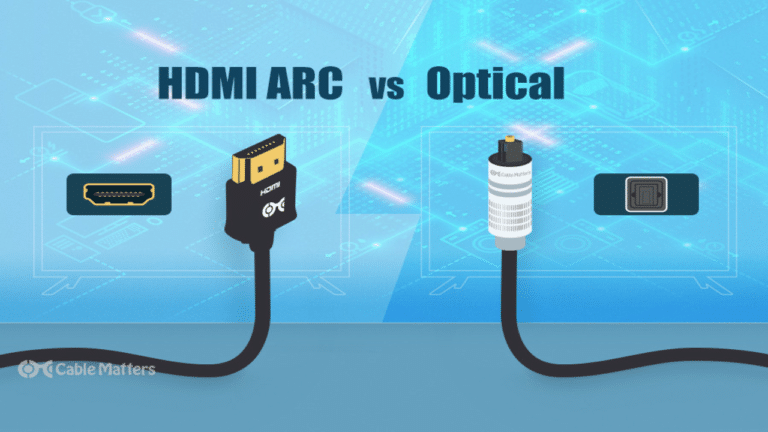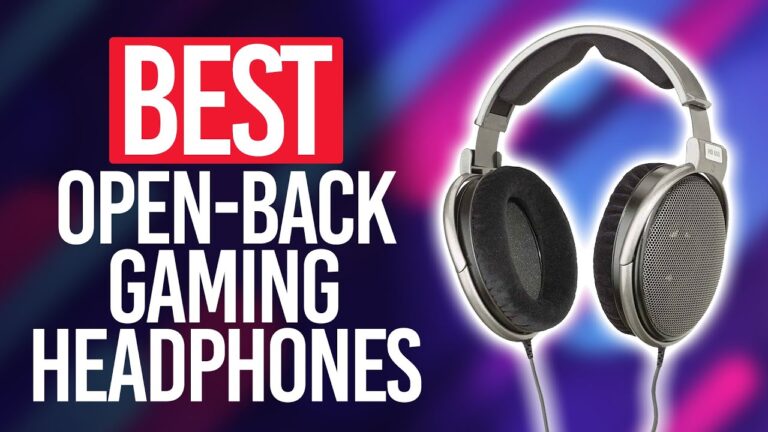The world of audio is filled with all sorts of different products, each designed for a specific purpose. In-ear monitors (IEMs) and headphones are two such products that are often used for the same purpose: listening to music.
However, there are some key differences between the two that are important to understand.
In this blog post, we will explain the difference between in-ear monitors and headphones, so that you can decide which is right for you.
If you’re looking for a new pair of headphones, you may be wondering if in-ear monitors (IEMs) or headphones are better for you. Here’s a look at some key differences between the two types of audio gear.
Discover the perfect Sony wireless headphones for you in our article “The Top 5 Sony Wireless Headphones 2023,” and enhance your decision-making process with our companion guide “A Complete Guide to Choosing the Right Wireless Headphones.
Also, check out our article on ” The 5 Best Sony In-Ear Monitors 2023 “You Can Buy Today.
Headphones:
Headphones are a type of audio playback device that typically sits on or over the user’s ears. They can be used for a variety of activities, including listening to music, watching movies, and playing video games.
Headphones can be either wired or wireless, and they come in a variety of styles, including earbuds, on-ear, and over-ear.
In-Ear Monitors
In-ear monitors (IEMs) are a type of headphone that is designed to fit snugly inside the user’s ear canal. IEMs are typically used by musicians and audio engineers who need to hear their music or recordings clearly and without distraction. IEMs can be either wired or wireless, and they also come in a variety of styles.
When it comes to in-ear monitors (IEMs) vs. headphones, there are a few key differences to consider.
We will also provide recommendations on which type of equipment may be best suited for different use cases. Here’s a breakdown of how IEMs and headphones differ, so you can decide which is better for you.
Sound Quality:
One of the most important aspects of any audio equipment is sound quality. Both IEMs and headphones can deliver high-quality sound, but they do so in different ways.
IEMs provide a more direct path to the ear canal, which allows for a more immersive listening experience and better noise isolation. This means that you can enjoy your music without being distracted by external sounds.
Headphones, on the other hand, provide a more open soundstage and can offer a wider frequency response range. This means that you can hear more of the music and appreciate the nuances of the different instruments and vocals.
Portability:
Another important consideration when choosing between IEMs and headphones is portability.
If you plan on using your audio equipment while traveling or on the go, then IEMs may be a better choice. IEMs are small and lightweight, making them easy to carry around.
They are perfect for use while traveling because they take up very little space in your luggage. Headphones, on the other hand, are less convenient to carry around due to their size and weight. They can be bulky and take up a lot of space in your bag.
Immersive Listening Experience:
One of the most significant advantages of IEMs is their ability to provide a more immersive listening experience. This is due to their direct path to the ear canal, which allows for a more personal and intimate listening experience.
With IEMs, you can feel like you are in the same room as the music. Headphones, on the other hand, provide a more open soundstage, which can make you feel like you are in a concert hall.
The choice between IEMs and headphones ultimately comes down to personal preference and the type of listening experience you prefer.
Size and fit:
The biggest difference between headphones and IEMs is their size and fit. Headphones are usually larger than IEMs and they don’t fit as snugly inside the ear.
This means that headphones can be more comfortable to wear for extended periods of time, but they may not provide the same level of sound isolation as IEMs.
Noise Cancellation:
Noise cancellation is a technology found in headphones and in-ear monitors that helps to reduce background noise. Headphones generally perform better than in-ear monitors at canceling out noise, but the two technologies have different strengths and weaknesses.
Headphones are typically better at canceling out ambient noise, but they may not be as good at canceling out specific sounds. In-ear monitors are generally better at canceling out specific sounds, but they may not be as good at reducing ambient noise. It is important to choose a type of headphones that will suit your needs and lifestyle.
Some people prefer to use headphones when they want to listen to music privately or when they are traveling so that they can avoid disturbing others. Other people prefer to use in-ear monitors when they are working or studying so that they can hear their surroundings more easily. It is important to choose the type of headphones that will work best for you.
Sound Quality
There is a big difference in sound quality when headphones and in-ear monitors are used. Headphones provide a more immersive listening experience, with a wider sound field and better bass response. In-ear monitors, on the other hand, tend to be more accurate and produce less distortion than headphones.
However, they can also be less comfortable because they sit directly in your ear canal. If you’re looking for a good audio experience, choose headphones over an in-ear monitor.
Headphones are often seen as being of high quality, but what about when it comes to sound? The quality of headphones can vary depending on the type of headphones and the way it’s used. I
n-ear monitors, for example, offer a higher quality sound because they block out external noise. Headphones that use regular ear cups tend to have a lower quality sound because they let outside noise in.
Sound quality can vary significantly between headphones and in-ear monitors. Headphones tend to provide a wider sound stage with more detailed sounds, while in-ear monitors are designed to reproduce sound more accurately within the ear canal.
In general, in-ear monitors are better for music listening and headphone for movies and gaming. However, there are many different types of headphones and in-ear monitors, so it is important to try several models before making a purchase.
Comfort
According to a study published in the journal Ear, Nose and Throat, headphone users report being more comfortable than those using in-ear monitors.
The study found that headphone users had less discomfort and better sound quality when wearing them for extended periods of time.
The researchers believe that this is because headphones do not block natural noise from reaching the ears, as in-ear monitors do.
Do Professional Musicians Use In-Ear Monitors?
In-ear monitors have become increasingly popular over the years as they offer many advantages over traditional floor monitors.
One major advantage is the reduction of stage volume, which can be harmful to hearing over time. With IEMs, musicians can hear themselves and their bandmates without the need for loudspeakers, which can also reduce feedback and other sound issues.
In addition, IEMs can be customized to fit the musician’s ear perfectly, providing a comfortable and secure fit that won’t fall out during a performance. They can also be used to block out ambient noise, which can be helpful for musicians who need to concentrate on their playing.
Overall, in-ear monitors have become an essential tool for many professional musicians, allowing them to perform at their best while protecting their hearing and delivering a high-quality sound experience for both themselves and their audience.
How To Choose The Right In-Ear Monitors vs Headphones For You?
Choosing the right in-ear monitors (IEMs) or headphones can be a personal and subjective process, and there are a few factors to consider. Here’s a step-by-step guide to help you make the right choice:
Determine your intended use:
The first step in choosing between in-ear monitors or headphones is to decide what you will be using them for.
Are you a musician or audio engineer who needs them for stage performances or studio recordings? Or are you an audiophile who wants to enjoy high-quality sound at home or on the go?
Different types of IEMs and headphones are designed for different purposes, so it’s important to know your intended use before making a decision.
Consider the sound quality:
Both IEMs and headphones can provide excellent sound quality, but they do so in different ways.
IEMs are designed to deliver a more accurate and detailed sound, while headphones can offer a more spacious and immersive sound.
It’s important to consider what kind of sound you prefer, and what you’ll be using them for.
Check the comfort and fit:
Both IEMs and headphones should be comfortable and fit well. IEMs need to fit snugly in your ear canal, while headphones should sit comfortably over your ears.
If they’re uncomfortable, you won’t want to wear them for long periods of time, and you won’t get the full benefit of their sound quality.
Evaluate the noise isolation:
IEMs typically provide better noise isolation than headphones, thanks to their snug fit in the ear canal. This can be beneficial if you’re performing or recording in a noisy environment, or if you’re listening in a noisy public space.
However, if you need to be aware of your surroundings, such as when jogging or cycling, headphones may be a better choice.
Consider the portability:
If you plan to use your IEMs or headphones while traveling, you’ll want to choose a portable model that’s easy to carry and store. IEMs are typically more compact and easy to transport, while headphones can be bulkier and less portable.
Determine the price:
IEMs and headphones can range in price from relatively inexpensive to very expensive. It’s important to determine how much you’re willing to spend before making a decision and to make sure you’re getting the best value for your money.
Ultimately, the right choice between in-ear monitors and headphones will depend on your individual needs and preferences.
By considering the factors listed above, you can choose the IEMs or headphones that will give you the best sound quality, comfort, and usability for your intended use.
Conclusion:
Both IEMs and headphones offer unique advantages and disadvantages when it comes to sound quality, noise isolation, portability, and immersive listening experience. IEMs are perfect for use in noisy environments and for those who prioritize portability and immersive listening.
Headphones are better suited for those who value a wider frequency response range and a more open soundstage. When choosing between the two, it is essential to consider your personal preferences and the type of use case you are looking to fulfill.
Overall, both IEMs and headphones are excellent options that can provide high-quality sound and a great listening experience.








![Best Headphones For Schools [recommendation] 2023](https://vluxa.com/wp-content/uploads/2023/12/vluxa.com_-768x432.png)